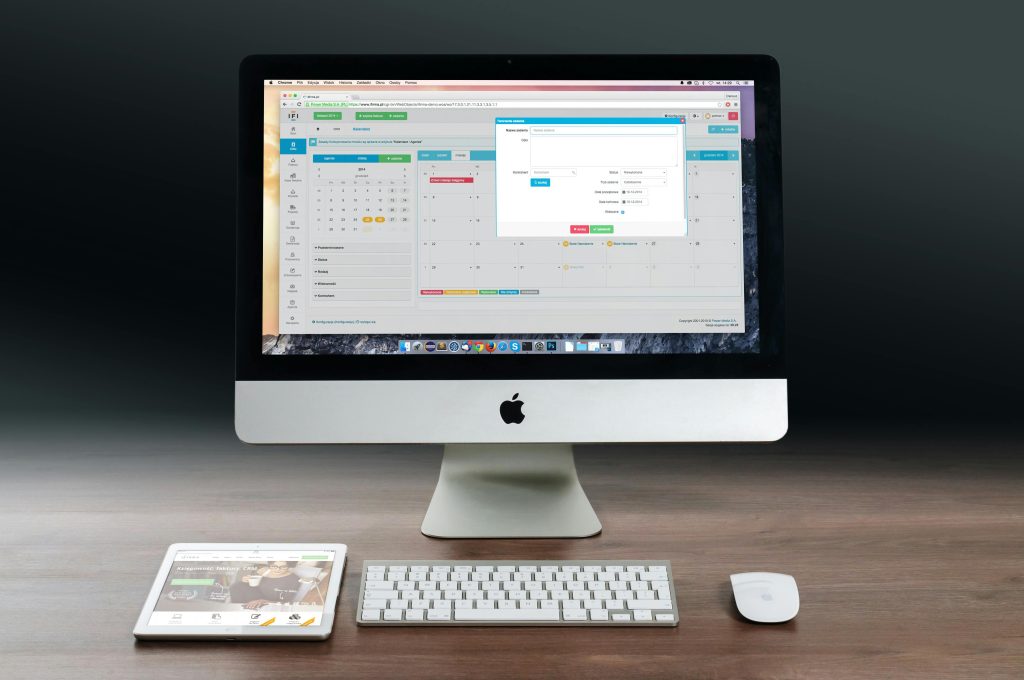Mobile apps have moved from “nice-to-have convenience” to a core operations layer in modern property management. With staff constantly in the field, tenants expecting instant digital service, and owners demanding real-time visibility into financial performance, mobile-first workflows shrink response times, reduce data entry errors, improve resident experience, and strengthen portfolio profitability. A solid mobile stack connects renters, maintenance techs, property managers, vendors, leasing teams, and owners in a single, time-stamped activity stream: rents paid, work orders closed, inspections logged, documents signed, notices delivered, locks re-keyed, meters read—all from a phone. In this guide, we unpack the major roles mobile apps play across the property lifecycle (residential, mixed-use, HOA, even light commercial), the capabilities to look for, implementation considerations, measurable ROI, and future trends shaping mobile-enabled property operations.
Why Mobility Matters in Property Operations
Property management is inherently distributed. Units sit across buildings, neighborhoods, cities—even countries. Traditional, office-bound software forces teams to jot notes in the field and re-enter later (hello, errors and delays). Mobile apps collapse that gap:

- Real-time data capture: Photos, videos, inspection scores, meter readings uploaded from site—no paperwork lag.
- Faster resident response: Approve maintenance or communicate ETA from anywhere; resident satisfaction rises.
- Cash flow speed: Rent reminders, in-app payments, autopay enrollment reduce delinquencies and time-to-cash.
- Operational consistency: Guided mobile workflows standardize inspections, make-readies, and compliance tasks across staff turnover.
- Owner transparency: Snapshot KPI dashboards on the go build trust and reduce “Where’s my statement?” calls.
Core Functional Roles Mobile Apps Serve
1. Resident / Tenant Self-Service
Mobile resident apps reduce office calls and email volume by letting renters:
- View lease terms, balance, and payment history.
- Pay rent (ACH, card, wallet, auto-pay setup).
- Split roommate payments (if supported).
- Submit maintenance requests with photos/video.
- Track work order status and technician ETA.
- Receive push reminders for rent, renewals, inspections, scheduled maintenance entries.
- Download community rules, parking permits, gate codes, Wi-Fi info.
- Reserve amenities (clubhouse, EV chargers, laundry slots).
- Chat or message management (asynchronous service channel).
Impact: Lower delinquency, fewer disputes (documented payments), higher retention when service feels responsive.
2. Maintenance & Work Order Management
Maintenance is where mobile truly shines.
Technician Mobile App Capabilities:
- Receive assigned work orders in route order.
- View resident notes, unit access instructions, pet alerts.
- Scan barcodes/QR on parts inventory; decrement stock in real time.
- Capture before/after photos; attach to work order.
- Log labor & materials; collect resident signature on completion.
- Mark units “Make-Ready Complete” in turnover workflows.
- Offline capture (sync later) for basements / no-signal areas.
Manager Benefits:
- SLA tracking (time-to-first-response, time-to-completion).
- Vendor performance analytics.
- Accurate expense coding tied to unit/GL.
3. Mobile Leasing & Lead-to-Lease Acceleration
Leasing staff spend time on tours, not at desks.
Mobile Leasing Features:
- Prospect intake with scan of driver’s license (auto-fill contact record).
- Mobile-friendly rental applications; applicants upload documents from camera roll.
- Credit/background pull integration.
- eSignature of lease and addenda directly in the app or via mobile web link.
- Real-time unit availability & pricing (avoid promising already-leased units).
- Self-guided or smart-lock tours—temporary codes sent to applicant phones.
Win: Shorter vacancy windows, fewer data-entry errors, improved compliance (all docs captured digitally).
4. Inspections, Turns & Preventive Maintenance
Paper inspections get lost; inconsistent scoring stalls turns. Mobile inspection tools standardize quality.
Use Cases:
- Move-in / move-out condition checklists (photos auto-stamped by date & unit).
- Routine safety inspections (smoke alarms, CO detectors, pool safety).
- Unit turn boards: tasks, materials, vendors tracked stepwise; progress visible to owner/manager.
- Preventive equipment routes (HVAC filters, roof checks) with QR-tag scanning ensures the right asset was serviced.
Accuracy Gains: Fewer resident damage disputes; documented condition reduces litigation risk; better CapEx planning from aggregated condition data.
5. Accounting Touchpoints & Field Collections
Full GL posting is still best on desktop, but mobile apps support field-level accounting triggers:
- Accept one-off payments at property events (with card reader).
- Record petty cash spend tied to unit.
- Track mileage or trip logs per work order (reimbursements).
- Scan receipt images to expense queue.
This shrinks spreadsheet drift and month-end reconciliation headaches.
6. Communications & Notifications Hub
Property operations rely on timely, documented communication.
Mobile Messaging Modes:
- Broadcast building notices (water shutoff, elevator repair) via push + SMS.
- Individual threads linked to unit history.
- Automated triggers: late rent day 2 reminder; renewal 60-day notice; lease expiration countdown.
- Multilingual message templates; auto-translation for resident reply (platform dependent).
Documentation: All messages attach to resident record—critical in disputes.
7. Owner / Investor Mobile Access
Portfolio owners expect real-time visibility.
Owner App / Portal Functions:
- View property-level KPIs (occupancy, delinquency, NOI trends).
- Approve large expenses pushed from mobile maintenance.
- Review digital statements, 1099 reports.
- Monitor CapEx project photos and spend in real time.
- Receive alerts for lease expirations, major delinquencies, insurance renewals.

Transparent, on-demand reporting strengthens owner retention and justifies management fees.
8. Access Control & Smart Building Integrations
Mobile apps increasingly act as the digital key:
- Issue mobile credentials to residents, staff, vendors, and self-guided tours.
- Time-bound access tied to work orders (tech can open unit only during scheduled window).
- Audit trails: who entered, when.
- Integrate with parking gates, package lockers, elevators.
Reduced lock rekeying, tighter security, and fewer lost keys.
9. Compliance & Documentation
Housing regulations, fair housing documentation, habitability standards—mobile keeps you audit-ready:
- Timestamped inspection records with GPS validation.
- Document resident notices sent and acknowledged.
- Store lead paint disclosures, mold disclosures, rent control forms in resident record.
- Capture digital signature for legally required entry notices.
In regulated markets, this audit trail is invaluable.
10. Analytics Feedback Loop
Mobile apps generate granular operational data:
- Work order volume by property & trade.
- Response times by technician.
- Resident satisfaction scores captured in-app post-service.
- Payment behavior trends (autopay vs manual; day-of-month distribution).
- Amenity usage analytics to inform capital improvements.
Feed these data back into budgeting, staffing, and asset strategy.
Residential vs Commercial vs Community Association (HOA/Condo) Needs
| Segment | Mobile Priorities | Notes |
|---|---|---|
| Multifamily Residential | Rent payments, maintenance, leasing, messaging | High volume; resident UX critical. |
| Single-Family Rental Portfolios (SFR) | Field maintenance routing, vendor coordination, remote inspections | Distributed geography; mobile photos vital. |
| Student Housing | Roommate split payments, move-in surges, access control | Seasonal peaks; self-serve check-ins. |
| Senior / Assisted Living | Work orders + wellness checks, med reminders (specialized) | Compliance heavy. |
| Commercial (Office / Retail) | Lease abstract access, CAM reconciliations, occupant service tickets | Fewer units, higher value, custom workflows. |
| HOA / Condo | Dues payments, common-area maintenance, architectural requests, voting | Board visibility and community communications central. |
Build vs Buy: Mobile Strategy Options
Buy (Property Management Software with Native App)
Pros: Fast deployment, integrated data model, app store distribution, built-in payments & accounting sync.
Cons: Feature gaps vs unique workflows; UI locked to vendor; subscription cost.
Platform + Custom Extensions (SDK / API)
Use a major PMS with APIs; build lightweight mobile extensions for niche processes (e.g., capital project inspections).
Fully Custom App
Justified when brand experience is strategic (large REIT, hospitality cross-over) or workflows highly specialized. Requires ongoing dev budget + compliance maintenance (payments, PII security).
Hybrid Common: Use vendor resident app + custom maintenance tech app integrated via APIs.
Implementation Roadmap for Mobile Property Management
Phase 1 – Readiness & Data Hygiene
- Clean unit IDs, resident contacts, owner records.
- Standardize work order categories & SLAs.
Phase 2 – Pilot: Maintenance & Resident Payments
- Roll mobile maintenance to one property cluster.
- Enable resident app for digital rent & tickets.
- Measure adoption, response time, error rate.
Phase 3 – Leasing & Inspections
- Mobile applications, e-sign leases, move-in/out inspections.
- Tie inspection photos to resident ledger for deposit reconciliations.
Phase 4 – Owner Visibility & Advanced Automations
- Push owner KPI dashboards.
- Automate renewal notices & rent escalations via mobile triggers.
Phase 5 – Smart Access / IoT Integration
- Mobile keys for vendor entry, self-guided tours.
- Sensor alerts (water leak, temp) feed maintenance queue.
Adoption Best Practices
- Start with Resident Value: Lead rollout with easy online payments & fast maintenance updates; adoption follows utility.
- Incentivize Autopay Enrollment: Discount processing fees, raffle, or one-time credit.
- Train Maintenance Techs in Context: Ride-along training beats classroom slides.
- Use Push Notifications Wisely: Too many alerts = disabled notifications; focus on actionable messages.
- Language Localization: Multilingual resident base? Localize app text & templates.
- Offline Mode Planning: Many mechanical rooms = dead zones. Ensure queue & sync reliability.
- Data Validation Rules: Force location/unit scan before closing work order to avoid mis-logs.
Security & Privacy Considerations
Property data includes PII, financials, access codes. Mobile apps must:
- Use encrypted transport (TLS) and at-rest encryption on device caches.
- Support biometric or MFA logins for staff apps.
- Tokenize payment methods; never store card numbers locally.
- Partition data by role (maintenance tech shouldn’t see rent balances; leasing shouldn’t see other owners’ portfolios).
- Auto-wipe on device loss (through MDM / conditional access).
- Log all privileged actions (rent adjustment, lock code change).

Compliance frameworks (PCI, SOC, GDPR, regional housing regs) may apply depending on geography and data flows.
Measuring ROI: What to Track
Tie mobile adoption to measurable outcomes.
| KPI | Pre-Mobile Baseline | Post-Mobile Target | Business Impact |
|---|---|---|---|
| Rent paid digitally (%) | 45% | 85%+ | Faster cash, fewer posting errors |
| Delinquency >5 days (%) | 12% | <7% | Improved collections |
| Avg work order response (hrs) | 18 | <6 | Resident satisfaction, retention |
| Work order completion accuracy (docs attached) | 40% | 95% | Chargeback defense, audit |
| Turn cycle time (days vacate→rent-ready) | 14 | 8 | Vacancy cost reduction |
| Resident app adoption (active logins/unit) | — | 70%+ | Engagement proxy |
| Owner inquiry calls/month | 120 | 40 | Self-service portal ROI |
Common Pitfalls (and Fixes)
| Pitfall | Result | Fix |
|---|---|---|
| Poor data mapping (wrong unit IDs) | Misapplied charges, confusion | Clean data before go-live; scan-based unit verification. |
| App launched without resident communication | Low adoption | Multi-channel rollout: email, SMS, door hangers, lease addendum. |
| Maintenance techs revert to paper | Data gaps | Enforce scan-to-complete; manager dashboards show compliance. |
| No offline support | Lost inspections | Use apps with local caching + retry sync. |
| Feature overload upfront | User confusion | Roll features in phases; start with payments + maintenance. |
| Lax role permissions | Data privacy risk | Role-based gating; regular access reviews. |
Future Trends: Where Mobile Property Tech Is Headed
- AI Maintenance Triage: Residents upload video; AI classifies severity & parts; auto-routes vendor.
- Predictive Equipment Alerts: IoT sensors push mobile work orders before failure.
- Augmented Reality Inspections: Overlay maintenance instructions or record annotated walk-throughs.
- Conversational Interfaces: Voice or chat to submit maintenance or check balance.
- Embedded Insurance & Utilities: In-app offers tied to move-in, auto-provisioned services.
- Data-Driven Renewal Pricing: Mobile push with dynamic renewal offers based on market comps and resident behavior.

Conclusion
Mobile apps have become the connective tissue of modern property management—shrinking distance between people, places, and data. They streamline rent collection, accelerate maintenance, standardize inspections, enable mobile leasing, strengthen owner trust, and surface real-time operational intelligence. Success isn’t about having “an app”; it’s about embedding mobile-first workflows into the daily rhythm of operations and ensuring every scan, photo, payment, and signature lands in the system of record without rekeying. Start with a high-value pain point—digital rent payments or maintenance dispatch—measure improvements, then expand feature sets as adoption grows. With disciplined rollout and good data hygiene, mobile property tools become a durable competitive advantage.

